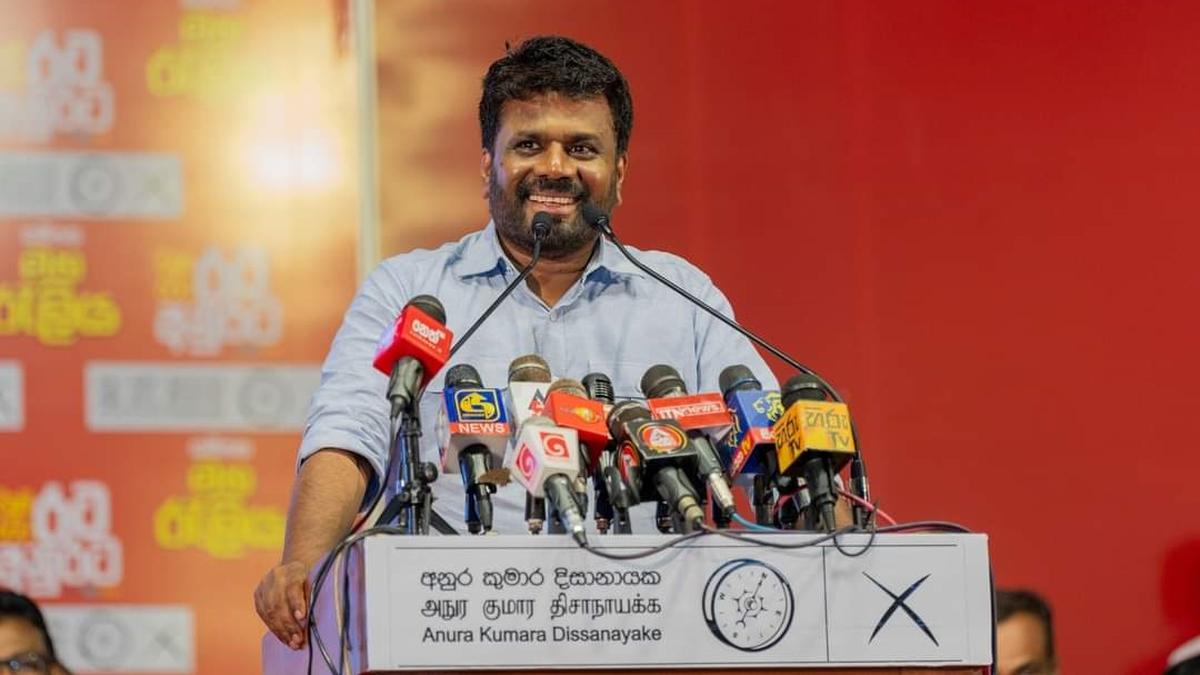
Who is Anura Kumara Dissanayake, new President of Sri Lanka
The Hindu
Who is Anura Kumara Dissanayake, the new President of Sri Lanka
“100 % sure.” That is what Anura Kumara Dissanayake, opposition legislator from Colombo, said days before the September 21 election, when a visiting journalist asked if he could win the presidential race. His calm confidence could have had only one basis — the certainty that he embodies the change Sri Lankans emphatically want.
When Mr. Dissanayake, popularly known by his initials “AKD”, entered leftist politics in his student days, becoming the country’s president one day was probably the furthest from his mind. It was the youngster’s hostility to the state and ruling class that led him to the student wing of the Janatha Vimukthi Peramuna (JVP of People’s Liberation Front), a party of Marxist-Leninist origins. He came from a small farmer household that was not politically active. His father was an office aide in the government Survey Department and his mother was a homemaker.
His first cousin, someone he looked up to as his older brother or “aiya”, was already in the party. His cousin was killed during the Ranasinghe Premadasa government’s counter-terror to that of the JVP’s armed insurrection in 1988, its second after the early 1970s. Mr. Dissanayake was 20 at the time. The following year, he saw his parents’ modest home in Anuradhapura in the island’s North Central province torched for association with the party. Even as the JVP’s second uprising against the state saw brutal killings, including of political opponents, ordinary government employees and dissident leftists, the state’s response was many times more lethal. It was this firsthand experience of “state terror” that strengthened Mr. Dissanayake’s resolve to join and remain in the JVP.
Since the late 1980s, the party’s political profile has changed considerably. In its first insurrection in 1971 the JVP had an anti-imperialist and socialist character, aiming to overthrow capitalism and transform political, social and economic institutions. But by the 1980s, the JVP took a decidedly more Sinhala-nationalist turn, fiercely opposing accommodation of Tamil political claims for self-rule and India’s involvement as an arbiter when the country’s ethnic conflict exploded into war, following the anti-Tamil pogrom of July 1983; in which the party was falsely implicated by the United National Party government of J. R. Jayewardene (uncle to President Ranil Wickremesinghe) and banned for some years. After this revolt was crushed and the party legalised, the JVP’s course shifted in 1994 when the new leadership joined the political mainstream entering parliament. Mr. Dissanayake himself secured a seat in 2000 and served as Minister of Agriculture in the government of President Chandrika Kumaratunga Bandaranaike between 2004 and 2005. In 2014, Mr. Dissanayake was named leader of the JVP, succeeding Somawansa Amarasinghe.
Speaking of Mr. Dissanayake’s leadership style, fellow MP Vijitha Herath notes: “Our party adopts a consultative approach, it is not leader centric. AKD is a very clear-headed decision maker. He is very good at factoring in multiple views and taking the best decision quickly, in real time.” Besides being long-time comrades, and entering parliament the same year, Mr. Herath and Mr. Dissanayake were also together at the public University of Kelaniya, where Mr. Dissanayake graduated in physical sciences.
“AKD” is also widely regarded as a compelling and informed speaker. His interventions in parliament in clear Sinhala stacked with facts and figures often drew notice. He made a mark in 2018, as a fierce critic of President Maithripala Sirisena’s abrupt sacking of then Prime Minister Ranil Wickremesinghe that left the country in a crippling, 52-day political crisis. The party moved two No Confidence Motions against Mr. Sirisena and was among the band of petitioners who challenged the move at the Supreme Court. At the time, Mr. Dissanayake argued that the JVP and the Tamil National Alliance (TNA), then the main grouping representing Tamils of the north and east, should work together. “The JVP (or People’s Liberation Front) and the TNA represent sections in the country’s south and north that have suffered most due to the actions of the repressive State,” he told The Hindu in November 2018.
At the time, JVP had six MPs in the 225-member House. They were a small, but strong team in Parliament. However, realising that the party’s political fortunes depended on both expanding its base and widening its appeal, Mr. Dissanayake set up the National People’s Power (NPP) Alliance, with over two dozen small political groups, professionals, academics and activists. It marked the beginning of a third force, outside of Sri Lanka’s two traditional political camps led by the centre-left Sri Lanka Freedom Party, the centre-right United National Party and their offshoots. Youth from different parts of the country’s Sinhala-majority areas were drawn to the NPP that offered promise of change and new hope for the future.













